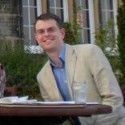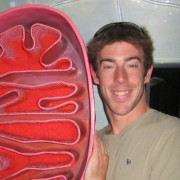MedicalResearch.com Interview with:
Dalane W. Kitzman, M.D.
Professor, Cardiology
Sticht Center on Aging
Gerontology and Geriatric Medicine
Translational Science Institute
Wake-Forest Baptist Health
Winston-Salem, NC
Medical Research: What is the background of the research?
Dr. Kitzman: Heart Failure With Preserved Ejection Fraction (HFPEF) is a relatively recently recognized disorder. It used to be thought that it was rare. However, we now realize that HFPEF is the dominant form of heart failure in America. It is also the fastest growing cardiovascular disorder. Interestingly, this disorder occurs almost exclusively among older persons, particularly women. The need is great because outcomes in persons with HFPEF (death, rehospitalization, health care costs) are worsening. This stands in contrast to most other cardiovascular disorders which are on the decline and / or are experiencing greatly improved outcomes. Remarkably, all of the large studies that have used medications in HFPEF that seemed they should be ‘sure bets’ showed no benefit for their primary outcomes. Thus, this is also the only major cardiovascular disorder where there is no proven medication treatment. That means physicians take ‘educated guesses’ in choosing treatment for this large group of patients.
The main symptom in patients with chronic HFPEF is shortness of breath and and fatigue with exertion. We showed in 2002 in JAMA that when we objectively measured this symptom with expired gas analysis (Peak VO2), this was as severely decreased in HFPEF as in patients with HFREF (severely reduced EF), the classic, well accepted form of heart failure. That and other studies helped lead to acceptance of HFPEF as a true Heart Failure disorder.
We first showed 5 years ago that 4 months of exercise training improves peak VO2 and quality of life in patients with HFPEF. In fact, exercise remains the only proven means to improve these patients’ chronic symptoms.
The goal of our study was to determine if weight loss diet also improved peak VO2 and quality of life in HFPEF patients, alone and in combination with exercise training. This was based on the under-recognized fact that over 80% of Heart Failure With Preserved Ejection Fraction patients are overweight or obese. It was already known that weight loss diet in other groups of older persons improves peak VO2 and quality of life. And small studies of
weight loss surgery in the other form of HF (HFREF) suggested that weight loss can improves symptoms, peak VO2, and quality of life. However, there had never been a study of weight loss, by diet or other means, in HFPEF. In fact, it had been thought, based on observational data, that weight loss diet might be contraindicated in HFPEF.
So we recruited 100 overweight / obese patients age 60 years and older with this disorder from our community; 80% were women. The exercise was standard exercise training that we’d previously shown was effective. The meals for the weight loss diet were prepared in our metabolic kitchen by a regisered dietition. Patients made out menus selecting preferred foods. Well balanced, healthy, nutritious, but very palatable. The portions were controlled so that there was a 350 caloric deficit per day deficit, on average. Pateints made their own breakfast with guidance, unlimited of certain fruits and vegetables, and occasional “free days”, such as for holidays. Patients loved the meals and wanted to continue after the 5 month study.
(more…)


 MedicalResearch.com Interview with:
Daniel Steffens, Ph.D.
The George Institute for Global Health
The University of Sydney
Medical Research: What is the background for this study?
Dr. Steffens: Back pain is a leading cause of disease burden globally. At present, a variety of interventions, such as getting a
MedicalResearch.com Interview with:
Daniel Steffens, Ph.D.
The George Institute for Global Health
The University of Sydney
Medical Research: What is the background for this study?
Dr. Steffens: Back pain is a leading cause of disease burden globally. At present, a variety of interventions, such as getting a 














